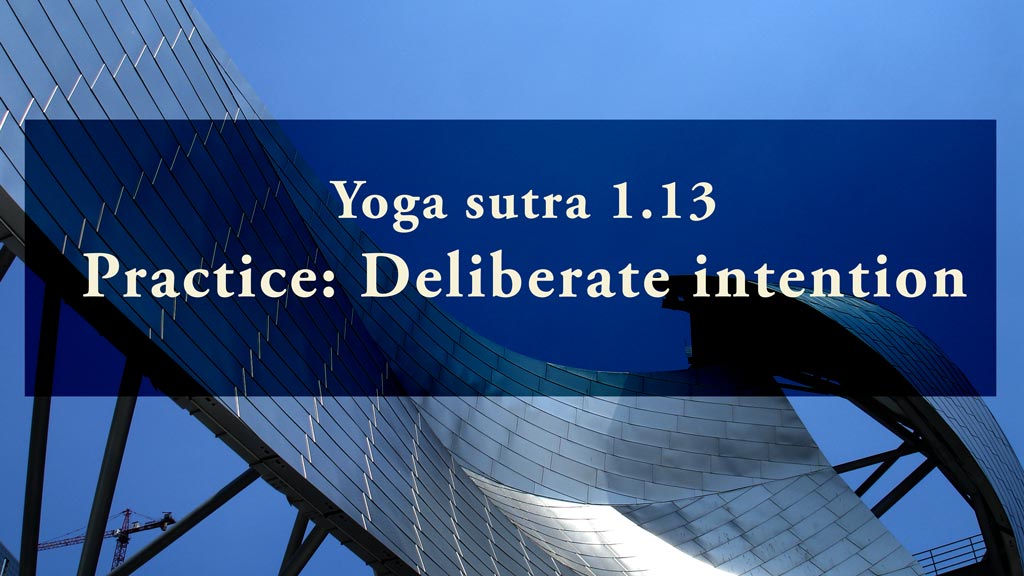
1.12: Practice and Release
July 1, 2019
1.14 Firmly rooted practice
July 13, 2019
1.12: Practice and Release
July 1, 2019
1.14 Firmly rooted practice
July 13, 20191.13: Practice: Deliberate intention


1.13 Practice (abhyasa) is established through deliberate intention.
After offering a method to neutralize our ways of being in 1.12, Patanjali proceeds by explaining the method. In order to get started on any project, it is essential to have clarity on the goal of the project. Finding a goal that is meaningful and beneficial motivates you to get started. It also reminds you to let go of distractions and to stay on track. For some people the goal of yoga is fitness, flexibility or relaxation. Others see yoga as a way to create inner harmony, or as a path to live authentically. Another option is to see yoga as a way to create balance in your life so that you can show up to your life with enthusiasm, kindness and compassion. What is your goal for your yoga practice? How is that goal similar to or different from the goals you have for your life?
In the process of setting a meaningful intention, it may be useful to distinguish if there is a difference between what you think (or say) is important to you and what you actually do. Your actions point to what you actually give enough importance to follow through on. As you set your priorities, you can write your sincere intention as a simple sentence such as: I dedicate my life wholeheartedly to ……, or I contribute …… to the world.
Setting your intention in clear terms provides an easy way to assess if you are actually moving in that direction. As you read your intention aloud to yourself, you can notice how this intention feels. What type of response does your intention produce in you physically, mentally and emotionally? It is perfectly natural to feel some uncertainty or trepidation, but beware of the tendency of the inner critic to crush what at this point may be only an idea. One of my favorite quotes is from Henry Ford: “Whether you think you can or you can’t, you are correct.” Thus, at least give your intention a chance. Planting your intention firmly by repeating it to yourself daily starts creating space in your awareness for that intention. Then you will be better able to notice ideas and information related to bringing your intention into reality. Also, know that moving towards your intention will probably require you to confront some obstacles and to move beyond complacency. This is how your determination gets tested. So, as you clarify your intention, it is a good idea to ask yourself: What are my commitments? Are my commitments aligned with my heartfelt purpose? What do I allocate energy and time to? What do I put on my “easy-to-ignore” list? What do I put on my list of priorities? Can you balance commitment with not taking yourself too seriously?
As usual, one more way of exploring the meaning of this sutra is by chanting it.
You can choose to chant it in its traditional form with all the words coming together:
तत्र स्थितौ यत्नोऽभ्यासः ॥१३॥
tatra sthitau yatno’bhyāsaḥ
or you may choose to chant the sutra separated into individual words:
- tatra
- sthitau
- yatnaḥ
- abhyāsaḥ
Unravel the thread is now available as a book!
If you find Simple-Yoga.org and Unravel the thread useful, consider supporting my labor with a donation, you may also donate using PayPal or Venmo. Thank you!
